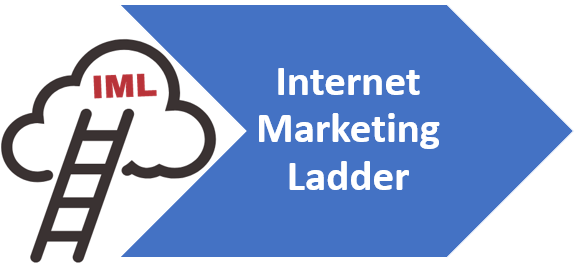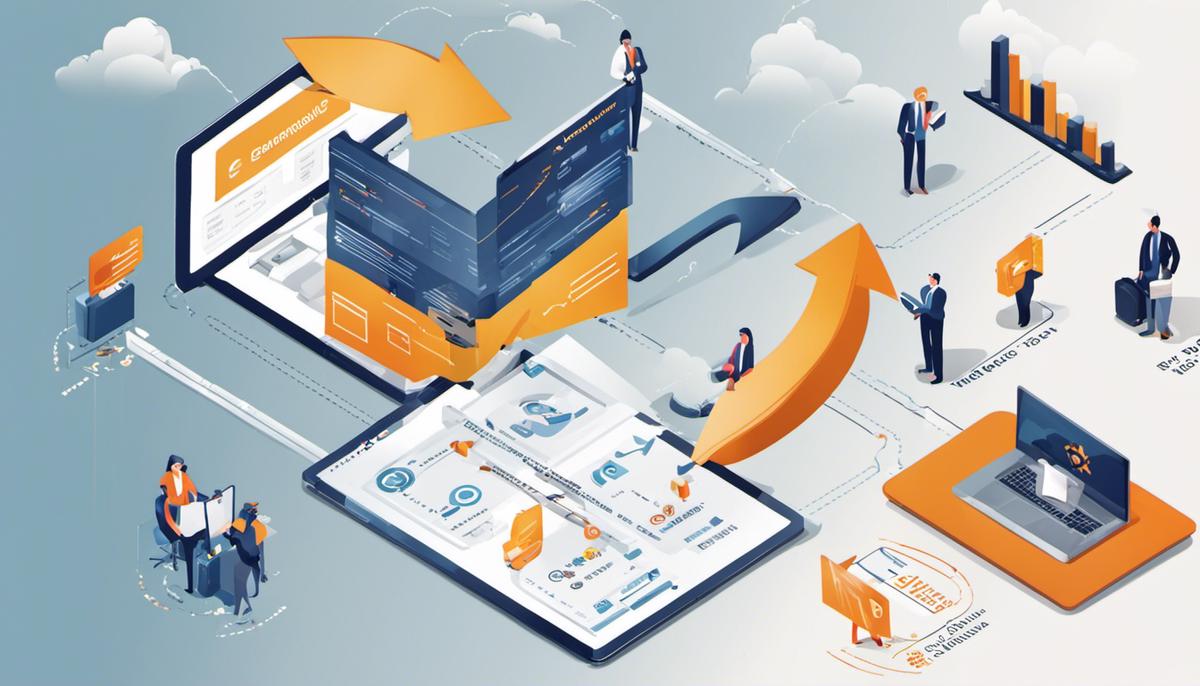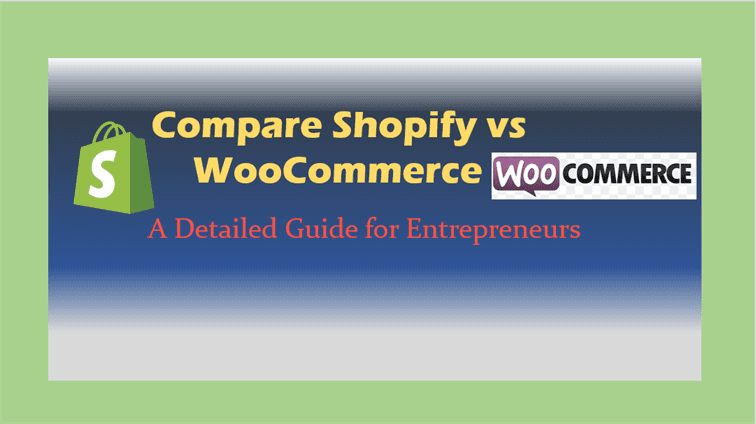Mastering Ecommerce Migration: Smart Planning Strategies
Ecommerce Migration Planning
As we ride the wave of digital transformation, businesses today are rapidly shifting towards online platforms to harbor more significant customer reach, advanced technology integration, and better business growth. A critical aspect of this transition is ecommerce migration, which isn’t a mere luxury anymore. It has now become an essential solution for overcoming commercial barriers in today’s fast-paced digital landscape. This discussion analyzes the necessities of ecommerce migration, critical elements to consider before the migration, meticulous planning required for a seamless transition, how to tackle potential challenges, and the inspiring success stories of companies who nailed the ecommerce migration process.
The Need for Ecommerce Migration
Are you gathering your forces for a bout with ecommerce migration? You’re smart to roll up your sleeves and brace for some big changes. The writing is on the wall. Ecommerce migration is not just pivotal – it’s becoming essential for the survival and growth of online businesses, be they fledgling startups or established conglomerates.
The evolution of technology, rising customer expectations, and the business realties of the digital age are surging forward at a breakneck speed. The question is not whether you should migrate, but how soon can you seize the opportunity for expansion, advancement and competitive edge that ecommerce migration promises?
Let’s delve straight into the heart of the matter: Why?
- Enhanced User Experience: In an era where consumer demands are no longer predictable, providing an unparalleled user experience is the holy grail for businesses. Deeper market penetration is possible only if your ecommerce platform is intuitive, responsive, and seamless across devices. Migrating to a modern platform can make the difference between customer churn and customer loyalty.
- Advanced Ecommerce Capabilities: The sophistication of ecommerce platforms today is indeed fascinating. Detailed analytics, automation, AI-integration, and multi-channel selling capabilities offer a world of possibilities for businesses to scale up. Sticking to an older, more basic platform is akin to competing in a 100-meter dash with a rickety cart instead of a Formula One racing car.
- Improved SEO: Where does your store stand in the digital universe? How easily can your products be found? Outdated platforms have inherent limitations that can weigh your SEO down while modern platforms are designed with SEO in mind, allowing for much better visibility and reach.
- Scalability: When opportunities knock, is your business prepared to scale? Advanced ecommerce platforms allow seamless integration with other business systems, rapid addition of product lines, and quick adjustments to changing market trends. Time spent battling technology is time lost in the market. Ecommerce migration is not just about survival, it’s about staying ahead.
- Streamlined Operations: Ecommerce migration paves way for better inventory control, order management, payment processing, and shipping integrations. By streamlining operations, businesses not only reduce costs but also enhance the overall customer experience.
- Security and Compliance: In a world of high-profile data breaches and rigorous regulations, data security takes center stage. Thanks to robust security measures on modern platforms, migrating your ecommerce store can gain your business an edge in customer trust and confidence.
Ecommerce migration is not a mere trend; it’s a sign of the times. In 2021, it’s the difference between business prosperity and stagnation. It’s the knock of new-age technologies – a cue for businesses to join the race to the future or risk being left behind. For the shrewd entrepreneur, timing isn’t everything, it’s the only thing. That time is now. Decisive action in ecommerce migration isn’t an option, it’s an imperative.

Key Factors to Consider in Ecommerce Migration
Analyzing Cost and Time Implications
Embarking on an ecommerce migration journey isn’t only about harnessing advanced capabilities, it’s also largely a financial affair. Unforeseen costs and time delays can wreak havoc on thinly spread business budgets and lengthy timelines. Be on the lookout for hidden expenses, such as data migration costs, theme and app configuration, and system integrations. Craft a realistic schedule, factoring in analysis, design, development, testing, and deployment phases – a hasty migration risks missing key elements and compromising the online store’s performance.
Defining Clear Migration Goals
Without a compass, even the most resourceful team can lose its way. Crafting smart, attainable migration goals ensures a clear path forward. Do you want to expand your product range significantly or break into new markets? Are you planning to incorporate complex business logic or increase your store’s loading speed? Precise goals provide a roadmap that shapes decision-making processes throughout the migration.
Selecting the Right Ecommerce Platform
A platform migration presents an opportunity to evaluate the effectiveness of your current solution and swap it out if it’s underperforming. Conduct a thorough product comparison to identify the most suitable ecommerce platform. Examine crucial elements, such as functionalities, usability, support services, and economic viability. The platform should ideally align with your brand’s present requirements and future growth plans.
Planning Data Migration
Product catalogs, customer information, order history, blog posts – migrating a significant volume of data can be daunting. A structured approach is vital to prevent losses and inaccuracies. Meticulously map out what needs to be transferred, in what order, and how it should be formatted in the new platform. Include all SKU data, customer details, order and shipping information, image files, and SEO metadata to preserve your search engine ranking.
Integrating Existing Systems
Business corpora benefit from numerous systems – CRM, ERP, PIM, and various marketing automation tools. Before jumping into migration, ensure the new platform aligns well with your current tech stack for seamless integrations. The potential costs associated with replacing or reconfiguring these systems to fit the newly adopted platform can drastically inflate the migration budget.
Ensuring Continuous Optimization
After the migration is complete, the key to optimal performance is continuous monitoring and adjustment based on analytics and customer feedback. Precision in tracking KPIs allows for immediate rectifications in strategy, which can drastically enhance customer satisfaction and the conversion rate. By tuning in to this cyclical process, businesses can elongate their successful runs and make their ecommerce migration a worthwhile endeavor.
In conclusion, planning for ecommerce migration requires a holistic approach, illuminating aspects that go beyond just advanced capabilities and compliance. Attention to these factors can significantly reduce turmoil during the transition and lead the business to an ecommerce solution that perfectly aligns with its objectives and future.

Detailed Ecommerce Migration Planning
Having already established why businesses should migrate to ecommerce platforms and what key considerations in the process should be, there is a need to delve deeper into the tactical perspectives of a successful migration. The process goes beyond just selecting the suitable platform and integrating pre-existing systems. It’s a carefully thought-out strategy that should be designed to mitigate risks, prevent financial setbacks, and seize the opportunities that the digital market space offers.
Employee Training and Workforce Preparedness
The linchpin of a successful ecommerce migration is the people executing it. Training and preparing the workforce ahead of migration is one of the critical components for smooth transition. It isn’t just about teaching them how to use a new platform. It’s about ensuring they understand the changes it brings and fostering adaptability among them. This training will empower them to handle emerging challenges effectively and capitalize on new market opportunities.
Customer Communication & Transition Strategy
Crafting a customer-centric transition strategy implies understanding customer behavior and preferences. Thus, communicating with customers about the forthcoming changes and how it will improve their shopping experience is essential. This not only helps in managing customer expectations but also nurturing their trust, which is crucial for retaining the customer base during and after the migration process.
Thorough Testing
Testing, both pre-launch and post-launch, can mean the difference between success and failure. A robust testing plan should entail system tests, integration tests, user acceptance tests, and performance tests. The aim should be to ensure the ecommerce platform is functioning optimally, can handle peak traffic, and provides a pleasant user experience.
Risk Assessment
A detailed risk assessment aids in preparing for unforeseen issues and mitigating them before they transform into unmanageable problems. Identifying potential risks such as cyber threats, data loss or corruption, and functionality failures and having contingency plans in place is a sound strategy.
Business Continuity
Finally, a comprehensive migration plan should not disrupt business operations. Plan for whatever period of business-critical activities, sales peaks, and customer-centric campaigns. Establish temporary alternatives for any service or operational disruptions during the migration process.
Keeping these pointers in mind, businesses can forge an ecommerce migration plan that is not just effective but also efficient, minimizing disruption and maximizing potential gains. It’s a forward-thinking approach that seeks to exploit the burgeoning digital market while ensuring the transition process is seamless and beneficial for all stakeholders.

Overcoming Ecommerce Migration Challenges
While the plethora of benefits compelling businesses to take their products and services online is undeniable, there also exists a host of hitches encountered during the e-commerce migration process. These obstacles, if not appropriately tackled, can seriously undermine the advantages businesses aim to gain. The good news is, they can be mitigated with a proactive approach and a savvy business mindset.
One of the most common challenges lies in Managing Downtime. In a physical store, the idea of closing down for renovations or remodeling is easily graspable. When it comes to e-commerce, though, this downtime becomes a slippery slope. What if the website is inaccessible during peak hours? That’s lost sales and a potentially dented reputation. It’s crucial to consider the downtime and strategize to keep it at a minimum or even avoid it completely by carrying out the migration during off-peak hours.
Another thorny issue businesses face is Loss of Essential Data. From customer details to sales records, losing these valuable data could cripple a business. Companies must establish rigorous data backup protocols. These processes not only safeguard critical information but also ensure businesses can bounce back swiftly and efficiently after any uncertain scenarios.
Following closely is the issue of Compatibility. An e-commerce platform might work perfectly fine on a particular device but may present issues on another. Such incompatibilities extend to different browsers and even various versions of the same browser. To resolve these, businesses must validate the new platform across all popular devices and browsers. Rigorous testing is instrumental in identifying issues that might otherwise be under the radar until it’s too late.
Fulfillment Challenges pose yet another hurdle. The shift to an online storefront alters the way businesses pack, ship, and keep track of their inventory. Balancing the art of mastering a seamless processing and delivery system can make or break an e-commerce business. Companies can combat this by establishing a robust and flexible fulfillment system that is highly responsive to market trends and customer behaviors.
Lastly, loss of Organic Traffic can become a haunting reality if not adequately managed. Typically, a dip in the organic search traffic is quite common during a migration phase. Severe losses can be prevented by correctly planning and executing 301 redirects, maintaining URL structures, and closely monitoring the website’s performance post-migration.
Every entrepreneur ready to champion the e-commerce wave must comprehend that knowledge is half the battle won. The more you uncover about potential risks, the more prepared you will be to face them head-on.

Success Stories of Ecommerce Migration
Let’s delve into the world of ecommerce migration, a sophisticated business maneuver executed by high-performing companies. Let us shed light on successful real-world instances that highlight the benefits obtained when the task is skillfully managed.
Diving headfirst into this topic, Amazon strikes a chord in every entrepreneur’s heart. This multinational titan migrated its extensive databases from Oracle to AWS, taking ecommerce migration to seismic levels. The result? Amazon cut down latency by 40% and database-related costs by over 60% in just two years. A masterstroke eliminating redundancy and improving agility.
Then, there’s the evolutionary leap by Staples, a prime example of strategically adoption of ecommerce migration. They transitioned from a legacy system to IBM Watson, integrating AI capabilities onto their platform. The outcome? A smarter, more personalized shopping journey that boosted customer engagement and sales, way above the fold.
Starring next in this line-up is Best Buy. This brick-and-mortar behemoth ventured online and then jumped ship from an inadequate digital system to a sturdy, more feature-rich platform. This move marked a 90% increase in mobile sales and stupendous three-digit growth in their online segment. A testament to the power of transformation when ecommerce migration is strategically employed.
Etsy, the marketplace for handcrafted goods, exemplifies meticulous planning and flawless execution during its ecommerce migration from PHP to Java. This transition streamlined their operations and improved the efficiency of their platform, driving developer productivity through the roof.
A narrative of ecommerce migration wouldn’t be complete without featuring Zappos. Its migration from Microsoft SQL to Amazon RDS stands as a benchmark for ecommerce entities. Reducing their reporting time from 20-30 hours to mere seconds, Zappos demonstrated the sheer potential of a well-thought, well-executed migration.
These business sagas are not told merely to inspire awe among fellow entrepreneurs. Instead, they serve as concrete examples of the compelling benefits of ecommerce migration. When approached cautiously and executed meticulously, it holds the promise of expanding operational capabilities, minimizing costs, expediting growth, and most crucially, exponentially enhancing the online customer experience.
Remember, in the entrepreneurial realm, savoring a victory necessitates enduring the volatile seas of change. And sometimes, that change comes masked as ecommerce migration. Take the helm, ride the wave and chart a course for uncharted sales heights. It is indeed one lucrative voyage that guarantees the pedestal of growth, profitability, and sustainability. Yes, it is demanding, but equally rewarding.

It is no revelation that ecommerce migration emerges as a powerful catalyst in the digital world’s thriving business scope. However, the process’s success significantly depends on understanding distinct business requirements, investing in the right platform, meticulous planning, and addressing potential risks promptly. Through various success stories shared, it becomes clear that with a strategic approach and robust solutions can negate risks, businesses can navigate the ecommerce migration process successfully. In the realm of the evolving digital marketplace, a well-executed ecommerce migration can indeed open up new avenues for enhanced customer experience, superior features, and ultimately, exponential business growth.







